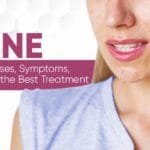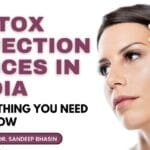Hello! I am Dr. Sandeep Bhasin, and in this article, I will walk you through the best ways to remove warts. As the owner of Care Well Medical Centre, I have treated many patients concerned about warts, and I understand how frustrating they can be. Warts are small, rough skin growths caused by the human papillomavirus (HPV). They often appear on the hands and fingers but can occur anywhere on the body. While generally harmless, warts can cause discomfort and embarrassment, prompting many people to seek treatment. In this article, find the best wart removal treatments, along with essential insights on causes, diagnosis, and preventive measures to help you tackle warts effectively.
What Are Warts?
Warts are caused by the human papillomavirus (HPV), which enters the skin through small cuts or breaks. Once inside, the virus causes the skin to thicken and form a rough bump. They may take weeks or even months to develop after exposure to the virus.
Causes of Warts
Warts are primarily caused by the HPV virus. There are over 100 strains of this virus, but only a few lead to common warts on the hands or feet. The virus spreads through direct skin-to-skin contact or by touching surfaces like towels or washcloths that have been contaminated. You can even get warts from biting your nails or picking at hangnails, which creates openings in the skin for the virus to enter.
Risk Factors
Not everyone who comes in contact with HPV will develop warts. Your body’s immune response plays a huge role. Some people are more prone to developing warts due to certain risk factors:
- Children and young adults: Their immune systems are still developing, making them more susceptible.
- Weakened immune systems: People with conditions like HIV/AIDS or those taking immunosuppressing drugs after organ transplants are more likely to get warts.
- Nail biters or hangnail pickers: These habits create openings in the skin where the virus can enter.
How Are Warts Diagnosed?
Diagnosing warts is relatively simple. In most cases, a healthcare provider can identify a wart by:
- Examining the wart visually.
- Scraping off the top layer of the wart to check for clotted blood vessels, which often appear as tiny black dots.
- Shave biopsy, where a small part of the wart is removed and sent to a lab to confirm the diagnosis.
Treatment Options for Wart Removal

There are many ways to treat warts. The best method for you depends on the location, size, and your personal preferences.
1. Salicylic Acid (Peeling Treatment)
Salicylic acid is a popular treatment for warts. It works by softening and peeling away the layers of the wart over time. You can find salicylic acid in over-the-counter gels, pads, or liquids. Here’s how to use it:
- Soak the wart in warm water to soften the skin.
- Apply the salicylic acid product daily, and gently file away dead skin with an emery board or pumice stone between applications.
This method may take a few weeks, but it’s usually effective for most people. If you experience skin irritation, stop using it temporarily.
2. Cryotherapy (Freezing Treatment)
Cryotherapy involves freezing the wart with liquid nitrogen, which forms a blister around the wart, eventually causing it to fall off. This treatment is often performed in a healthcare provider’s office. Multiple sessions may be needed. Cryotherapy can be a bit painful and may cause scarring, but it’s a fast and effective way to remove warts.
3. Laser Treatment
The laser therapy targets the wart’s blood vessels, cutting off its blood supply and causing the wart to die. Laser warts removal treatment is typically used when other methods haven’t worked. It can be effective, but there is a risk of scarring, and it may cause some discomfort.
4. Candida Antigen Injection
Candida antigen injections are another option. By injecting a small amount of candida antigen into the wart, the immune system is stimulated to fight off the wart. This treatment works for many people whose warts haven’t responded to other methods.
5. Surgical Removal
In some cases, we may need to surgically remove the wart using a curette to scrape it off. This method is often combined with other treatments to reduce the chance of recurrence. It can be slightly uncomfortable and might leave a scar.
6. Home Treatments
For those who prefer to start with home remedies, there are a few options available, including non-prescription treatments and DIY methods.
7. Over-the-Counter Treatments:
- Salicylic acid products: (pads, gels, and liquids) can be used daily. For best results, soak the wart before applying and remove dead skin between treatments.
- Freezing kits: These are similar to cryotherapy performed in clinics, but the over-the-counter versions are generally less potent.
8. Duct Tape Method:
Some people cover the wart with duct tape for six days, then soak it and remove the dead skin. They repeat this process until the wart disappears. While research on this method is mixed, some find it worth trying.
Prevention Tips
Here are a few ways you can prevent warts from spreading:
- Avoid touching or picking at warts.
- Keep your hands clean and moisturized to prevent skin cracks.
- Don’t bite your nails or pick at hang nails.
- Use separate grooming tools for warts and healthy skin.
Looking for safe, expert-led wart removal in Delhi? Explore our Laser Mole and Wart Removal Treatment in Delhi at Care Well Medical Centre.
Conclusion
There are several effective treatments for wart removal, and the best option depends on your needs. Some treatments, like salicylic acid, can be used at home, while others, like cryotherapy or laser therapy, require a visit to a healthcare professional. Warts can be stubborn, and even after treatment, they may return. If you’re unsure about the best approach or if your warts are persistent, consult with a healthcare provider.
At Care Well Medical Centre, we’re here to guide you through your options and help you find the most effective treatment for your warts.
Frequently Asked Questions (FAQs)
Yes, warts often go away without treatment, but this can take months or even years. Many people choose to remove them sooner for cosmetic reasons or because they cause discomfort.
Yes, warts can spread if you touch or pick at them. That’s why it’s important to avoid scratching or biting warts.
Yes, warts can spread through direct contact with the wart or by touching surfaces that have come into contact with the wart, like towels or washcloths.
Some treatments, like cryotherapy or laser therapy, can cause discomfort, but pain is usually manageable. Over-the-counter methods like salicylic acid are typically painless.
Warts can return even after successful treatment. The virus may remain in your system, and it’s not uncommon for warts to reappear in the same spot or nearby.
References:
- Newman CC, et al. Clinical pearls in dermatology 2017. Disease-a-Month 63:165.
- Soutor C, et al., eds. Viral infections of the skin. In: Clinical Dermatology: Diagnosis and Management of Common Disorders. 2nd ed. McGraw Hill; 2022. https://accessmedicine.mhmedical.com. Accessed Jan. 9, 2024.
- High WA, et al., eds. Warts and molluscum contagiosum. In: Dermatology Secrets. 6th ed. Elsevier; 2021. https://www.clinicalkey.com. Accessed Jan. 9, 2024.
- Bunik M, et al., eds. Skin. In: Current Diagnosis & Treatment: Pediatrics. 26th ed. McGraw Hill; 2022. https://accessmedicine.mhmedical.com. Accessed Jan. 9, 2024.
- Kwok CS, et al. Topical treatments for cutaneous warts. Cochrane Database of Systematic Reviews. http://onlinelibrary.wiley.com. doi:10.1002/14651858.CD001781.pub3/abstract. Accessed Jan. 9, 2024.
- Warts. American Academy of Dermatology. http://www.aad.org/public/diseases/a-z/warts-overview. Accessed Jan. 9, 2024.














